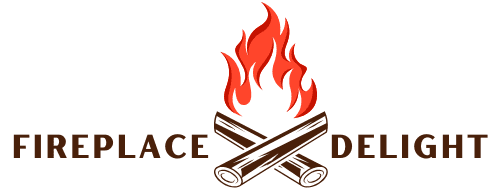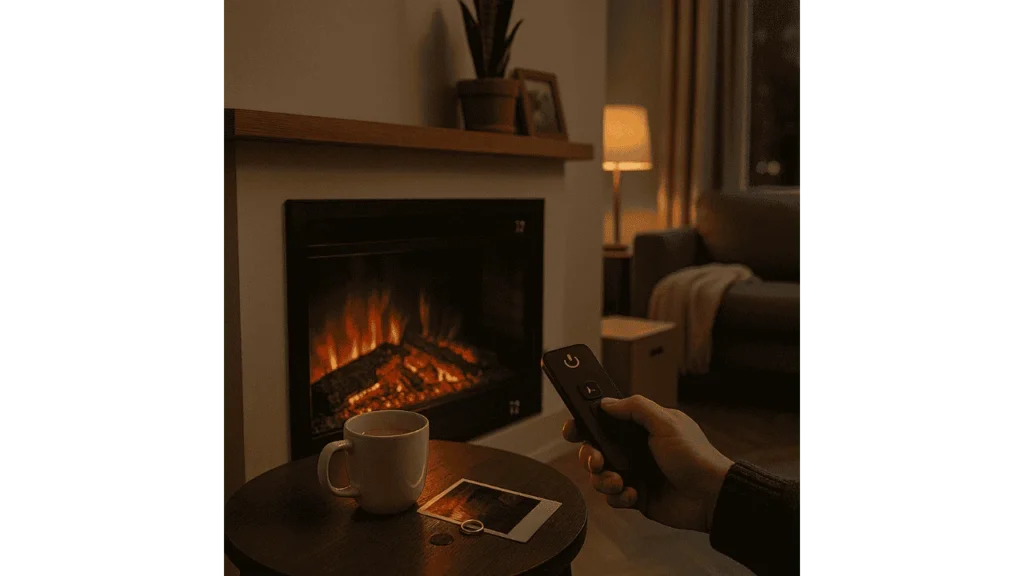Electric fireplaces are one of the most convenient and stylish ways to bring warmth and ambiance into a home without the complexity of traditional fireplaces. I’ve worked with countless homeowners who switched to electric models for their ease of use and modern features. These units not only provide cozy heat but also serve as attractive focal points in living rooms, bedrooms, and even offices. With simple setup and versatile controls, they make an excellent addition to any space. As interior designer Haley Bennett notes,
“An electric fireplace offers the aesthetic of a real flame without the hassle or hazard; it’s the perfect blend of comfort and convenience.”
Getting Started
Choose the Right Location
Before installing your electric fireplace, make sure you choose a safe and appropriate location. It must be near a grounded 120V outlet and away from water sources or flammable objects. Avoid using extension cords, as they can create fire hazards or damage the unit over time. I always tell clients to check the outlet capacity before plugging in; especially in older homes.
Initial Setup
Unbox the unit carefully and position it where it’s stable and level. Depending on your model, it could be freestanding, wall-mounted, or an insert for an existing fireplace cavity. Plug it directly into a grounded outlet and double-check that your power source is consistent and not prone to surges.
Turning On and Adjusting Settings
Powering Up the Unit
Most electric fireplaces come with a power button either on the control panel or remote. Simply press the button, and the unit should hum to life. If your model is app-enabled, some can also be powered via smartphone.
Setting Flame Effects
Adjusting the flame visuals is one of the best parts of using an electric fireplace. You can usually change flame color, speed, and brightness with the remote or control panel. Many people enjoy using the flame-only mode, which provides no heat but only ambiance. It’s perfect for summer nights or decorative use.
Adjusting Heat Output
The heat settings typically include low, medium, and high, or a digital thermostat for precise temperature control. Depending on the model, it may use coil, ceramic, or infrared technology. Each provides efficient warmth without producing real flames or harmful byproducts. According to heating specialist Marco Fields,
“Infrared models tend to offer the most even warmth with lower energy usage compared to traditional coil systems.”
Using Timers and Smart Features
Timer Functionality
A built-in timer can automatically turn off the unit after a set period, saving energy and enhancing safety. Look for timer buttons on your remote or control panel, which is ideal for nighttime use.
Smart Home Integration
Some electric fireplaces now integrate with smart home systems like Alexa or Google Home. If yours is Wi-Fi or Bluetooth-compatible, you can control it through an app or voice commands. That means you can turn on your fireplace before you even get home.
Safety and Operational Best Practices
Pre-Use Safety Checks
Always inspect your unit before turning it on. Ensure that nothing is blocking the air vents, and the power outlet is properly grounded. Keep the area around the fireplace clear from drapes, furniture, or other flammable materials.
During Use Precautions
Avoid placing objects directly on or near the unit. Never use extension cords or power strips. If you have pets or children, consider models with cool-touch glass and automatic shut-off features.
Proper Shutdown Procedure
When shutting down, turn off the heat and flame functions separately if your model allows. Let the internal fan run briefly to cool down the components before unplugging or switching off entirely.
Maintenance for Optimal Performance
Regular Cleaning
Dust buildup can reduce performance. I suggest using a microfiber cloth or vacuum to clean the vents and flame area monthly. Do not use liquids or spray cleaners inside the unit.
Annual Inspection
Once a year, do a thorough inspection. Check the fans, lights, wiring, and heating components. If anything seems off or worn out, consult the manual or contact the manufacturer.
Troubleshooting Common Issues
No Heat or Flames Don’t Work
Check that the power outlet works and that the breaker hasn’t tripped. Refer to your manual for error codes or reset instructions if your model includes diagnostics.
Unusual Noises or Overheating
Often, noise or overheating comes from blocked airways. Make sure all vents are clean and unblocked. If the noise persists, it might be time for a fan replacement.
Remote Not Responding
Start by replacing the batteries. If that doesn’t help, make sure there are no obstacles between you and the sensor. As a last resort, use the unit’s onboard controls to operate it.
Final Takeaways
Using an electric fireplace is simple and rewarding when done right. With proper setup, routine cleaning, and attention to safety, you can enjoy a cozy atmosphere all year long. Don’t forget to use smart features to enhance convenience, and keep up with maintenance to extend the life of your fireplace. It’s a low-effort, high-comfort upgrade for any modern living space.
- 27 Farmhouse Fireplace Ideas That Bring Warmth & Charm - August 18, 2025
- 25 Fireplace Lighting Ideas to Illuminate Your Hearth - August 7, 2025
- How to Replace an Electric Fireplace Switch? - August 5, 2025



